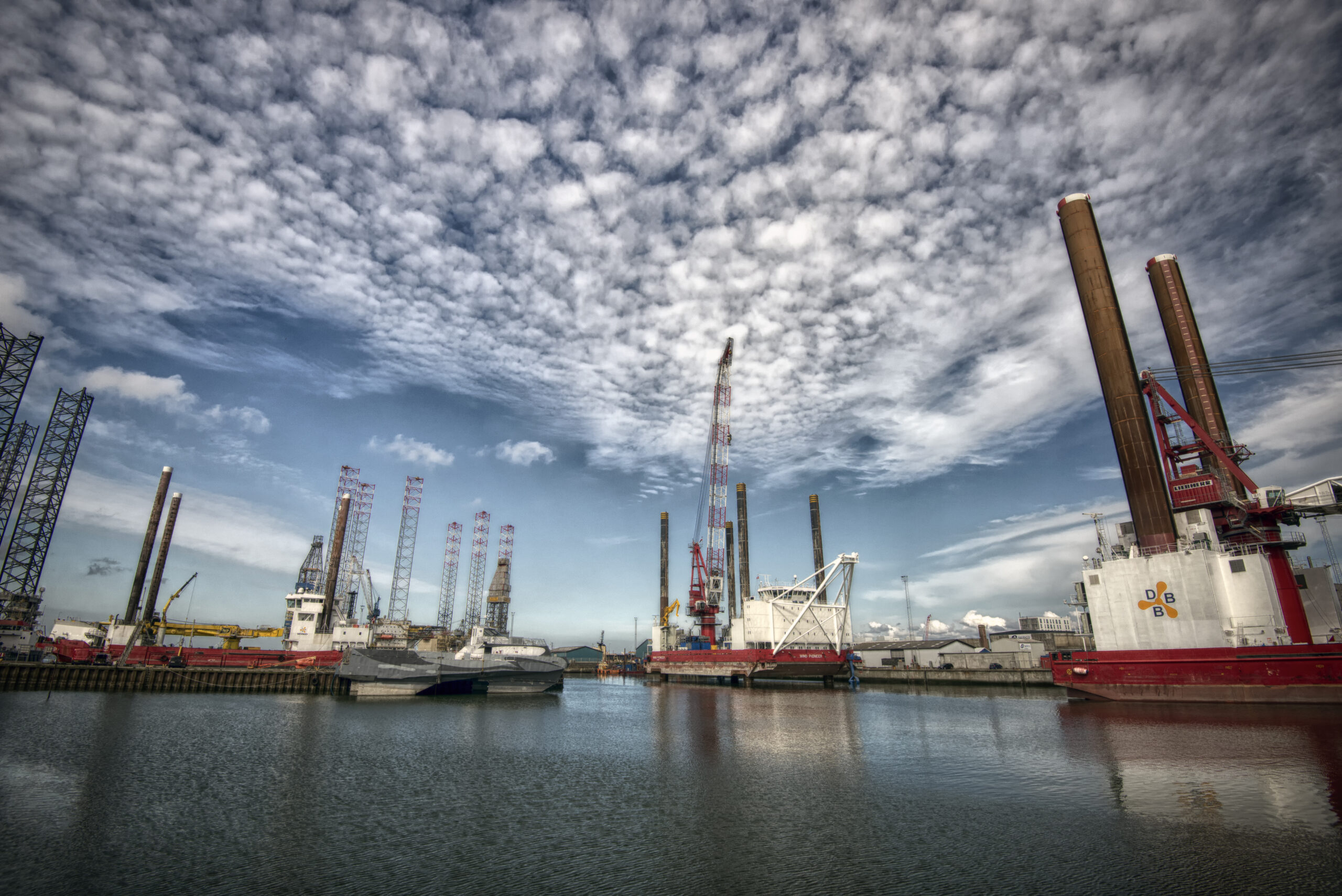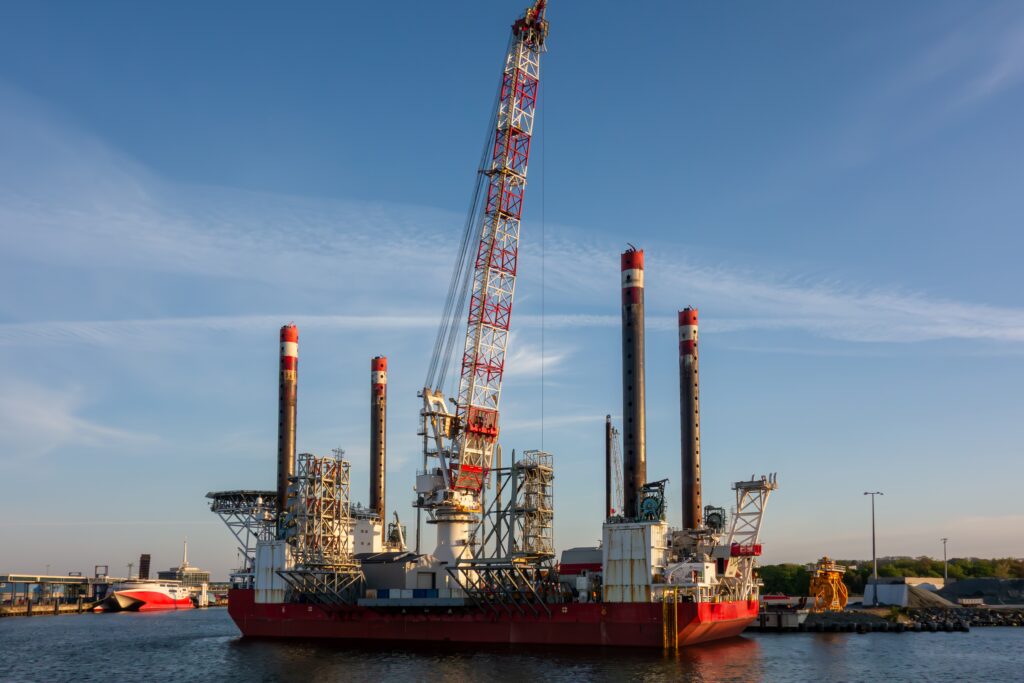Custom Projects: Structural Health Monitoring for Jack-Up Units
Jack-up rigs and vessels are among the most structurally dynamic offshore assets.

Their operations involve direct interaction between the hull, jacking system, and seabed, with constantly shifting stress profiles as legs are lowered, preloaded, and jacked up to working position. This complexity introduces risks ranging from uneven leg loading and punch-through effects at the spudcans to buckling at the leg-hull interface and fatigue in welded details. For Wind Farm Installation Vessels (WFIV), deck grillage and cargo-induced fatigue are additional challenges to safe operations and asset longevity.
To manage these issue, Light Structures has developed a SENSFIB configuration purpose-built for jack-up units. The system combines fibre optic strain sensors installed within the jacking houses with a calibrated digital twin that reflects unit-specific geometry and soil interaction. During operations, the system calculates live sectional loads per leg and reconstructs stress states at critical locations. These are automatically compared to pre-defined limits and buckling envelopes, with clear alarms issued when thresholds are approached, enabling timely corrective action.
Shifting from Assumptions to Evidence-Based Maintenance
Monitoring jack-up units in real time brings direct benefits to Condition-Based Maintenance (CBM) and Risk-Based Inspection (RBI) strategies. After a storm event or difficult jacking sequence, the technical team receives a clear record of where structural loading was highest and how much fatigue was accumulated. This eliminates guesswork and allows inspections to focus on high-priority areas, avoiding unnecessary checks and reducing operational downtime.
Over the long term, this approach supports stronger lifecycle planning and better utilisation of resources. Rather than operating based on conservative assumptions, operators can point to measured evidence of asset condition and structural performance. The system’s ability to log and trend fatigue development also supports more confident decisions about extending a unit’s service life or scheduling upgrades.
Understanding the Hotspots and How to Monitor Them
While many jack-up structures follow similar design principles, the most fatigue-prone areas are well known. The leg-hull interface, where bending forces concentrate, is a primary hotspot, as are the load paths within the jacking house and the lower leg regions near the mudline. These areas experience variable loading depending on water depth, anchoring strength, and environmental conditions, making them ideal candidates for monitoring.
The SENSFIB configuration developed by Light Structures does not require instrumentation on the legs themselves. Instead, it uses strategically placed strain rosettes inside each jacking house to capture the forces transferred into the legs. These sensors feed data into a central edge-processing unit, where the correct conversion matrix is automatically selected based on operating conditions. Optional integration with jacking PLCs, heading sensors, or wind data can provide further context, refining accuracy without adding mechanical complexity.

Monitoring for Wind Farm Jack-Up Units
Further considerations are required for jack-up units working in marine construction, especially WFIVs. These vessels often operate under demanding transit and lifting conditions, with structural loads introduced not only through jacking but also through cargo transport and deck operations. In such cases, fatigue risks extend to areas like the deck grillage, cargo-securing structures, and the support frames for turbine tower barrels.
Light Structures has defined extended SHM scopes that incorporate accelerometers and Motion Reference Units (MRUs) to capture motion-induced fatigue and slamming on these vessels. This enables event-driven logic, where structural events like abnormal roll or impact loads are automatically flagged and contextualised. For WFIVs, this broader monitoring architecture is essential to protect high-value cargo and deck structures throughout the full operational profile.
Enabling Smarter Operations Through Class-Ready Insight
With SENSFIB, operators gain continuous insight into structural balance and safety margins during critical operations. The data supports faster, defensible decisions during jacking, helps shore teams verify performance remotely, and reduces the risk of unplanned interventions. As confidence in the data grows, so does the potential for greater operational flexibility.
Importantly, this SENSFIB configuration is fully compatible with leading classification society notations, including ABS SMART(SHM). These notations provide a clear and recognised framework for integrating SHM into modern class requirements. This makes it easier for owners to achieve advanced certifications and adopt condition-based maintenance regimes. Light Structures has already deployed this configuration on two jack-up units, including what is believed to be the first Tier-3 SMART(SHM) certification for a jack-up using fibre optic sensors and a digital twin.
Scalable Systems with Minimal Maintenance Requirements
SENSFIB systems are highly scalable, with configurations suitable for a wide range of jack-up types. These include compact self-elevating units, larger offshore construction vessels, and heavy-lift wind turbine installation platforms. Regardless of scale or design, the same fibre optic foundation ensures reliable, high-resolution structural insight.
With no moving parts, no need for recalibration, and minimal after-installation maintenance, SENSFIB also offers long-term performance with low cost of ownership. This makes it a practical and strategic investment for jack-up operators who are focused on uptime, safety, and lifecycle value.
Download our Jack-Up one-pager here:
